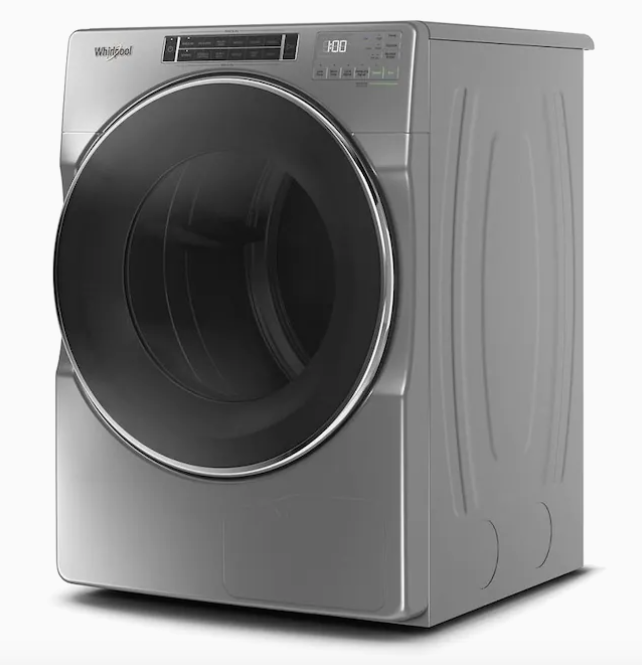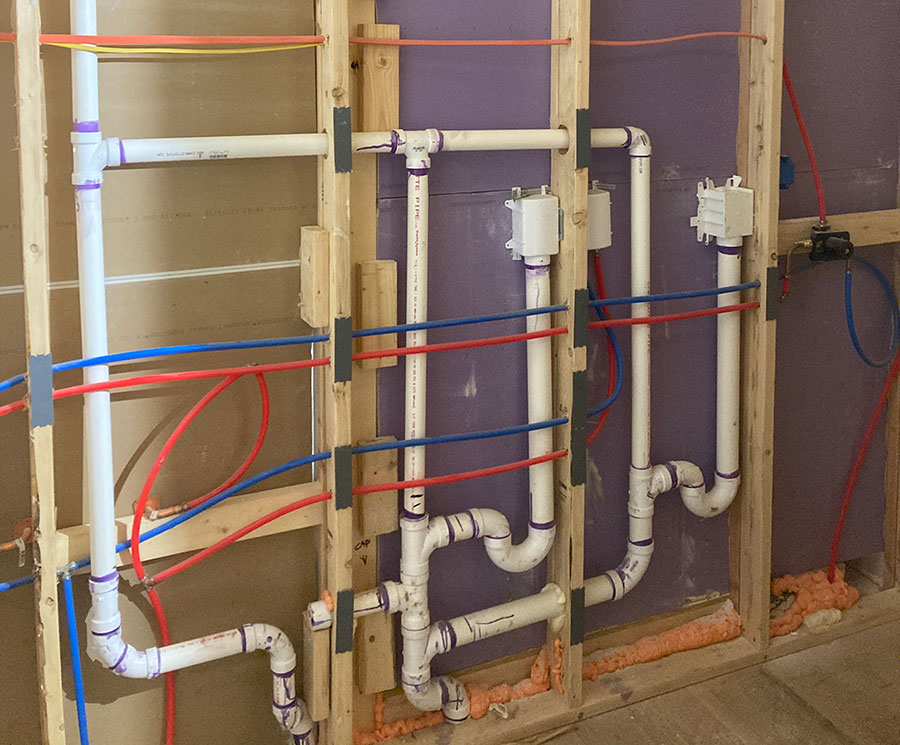When your goal is energy efficiency, appliance selections matter. We have chosen to install a ventless heat pump dryer, rather than a traditional gas or electric vented dryer. Read below about the pros and cons of both.
Hey! It has been a while since you last heard from us. It turns out that building a house (and preparing for a new baby) takes a lot of time. We have been busy with inspections, drywall, door installation and trim. Follow us on Instagram to see some progress.
In my wife’s opinion, we are starting to get to the “fun” part of the building process, which is picking out finishes. While picking out the washer and dryer wasn’t at the top of her list, I think this is one of the most important appliance decisions we are making in relation to energy efficiency. We have decided to move forward with a ventless heat pump clothes dryer.
What is a Heat Pump Dryer?
Heat pump dryers are very popular in Europe, where it’s often more difficult to have a vented dryer, due to architecture or apartment-style living. They haven’t been around for too long in the United States, but are gaining popularity due to some of their perks. The heat pump cycles heated air to dry clothes without excessive heat or moisture. Because the air is recycled inside of the machine, it doesn’t need to be vented outside, like a traditional tumble dryer.
Why Did We Choose a Ventless Dryer?
If you read our previous post about insulation, you know that a tight building envelope is key to energy efficiency in our home. Having a vent for the dryer to exhaust is just another hole in the house – and one that we don’t absolutely need. Traditional venter dryers also exhaust about 240 CFMs, so that’s heat that is freely escaping. When we learned that there was a way around this (a ventless dryer), we jumped on it.
Pros and Cons of a Heat Pump Dryer
I’ve been talking up the benefits of a heat pump dryer, but it has its downfalls, too. Otherwise, everyone would be converting! Check out the pros and cons below.
Pros of a Heat Pump Dryer
- Energy efficient – Heat pump clothes dryers use 40% to 50% as much electricity as a traditional electric dryer (Source)
- Gentle on clothes – Heat pump dryers are gentler on clothes than traditional dryers, because the air that dries the clothes doesn’t get nearly as hot
- No vent required – No exhaust vent means no hole in the wall. That means it can be installed in apartments, or nearly anywhere in the home. It also makes installation a breeze.
Cons of a Heat Pump Dryer
- Upfront cost – Heat pump dryers are generally more expensive than traditional electric or gas dryers
- Length of drying time – Because they don’t get as hot as traditional dryers, heat pump dryers require longer drying times
- Requires draining – A vent may not be required, but water still has to be able to drain somewhere. You can either empty a compartment that collects water every few cycles, or hook up a drain. (I definitely recommend hooking up a drain, if possible, for the convenience factor.)
Selecting the Whirlpool 7.4 cu. ft. Heat Pump Dryer
The most difficult part of selecting our heat pump dryer was actually finding options for sale. They’re still so uncommon in the United States that there aren’t a lot of choices out there. Also, many of them are designed for apartments, RVs or tiny houses, which are great for small homes, but not big enough for our growing family.
Ultimately, due to it being the only “full size” heat pump option that we could find being sold in the States, we have selected the Whirlpool 7.4 cu. ft. Heat Pump Dryer (model #WHD862CHC). The current cost at Lowes is $1,899. This certainly isn’t cheap, but we hope to experience energy cost savings over the years.

Installation Details
I mentioned in the “cons” section above that there has to be a place for water to drain. It can either be caught within a compartment in the dryer that needs periodically emptied, or it can be hooked up to a drain. To prevent the hassle of repeated dumping, I installed a dedicated drainage pipe.

Additionally, I’m a big Schluter fan, and decided to install a Schluter shower pan under my washer and dryer. Hopefully this will never need to be utilized, but serves as a “just in case” in the event that my washer or dryer drain would ever flood. The drainage pipe runs right into my mechanical room on my first floor, into a floor drain in the concrete.
Should You Consider a Ventless Dryer?
While a ventless dryer might not be the most common or economical option for those building a new home, they should definitely be considered if energy efficiency is at the top of your priority list. They also provide a great option for situations where venting is not feasible. Leave me a comment, and let me know your thoughts on heat pump dryers.
Build on!
